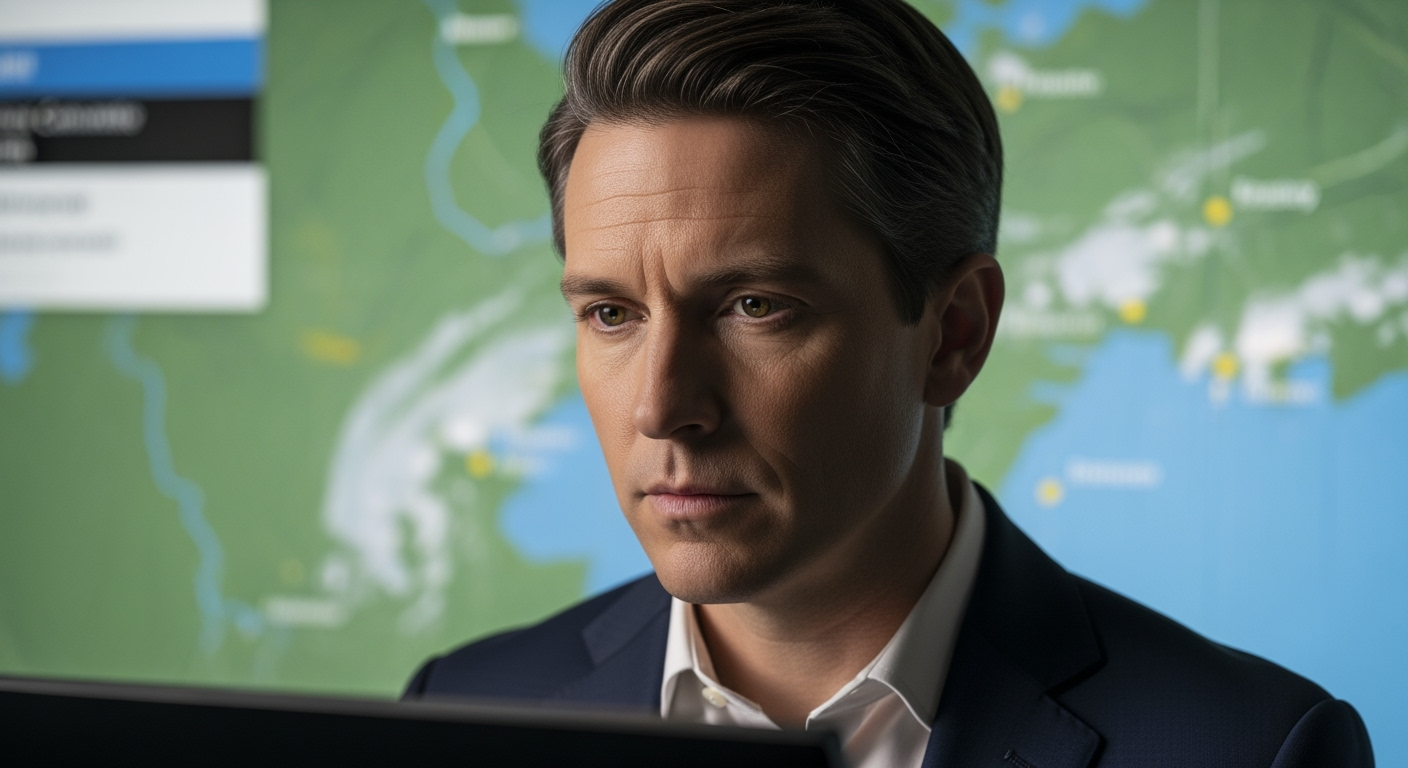Related Articles

The Unseen Costs: Dissecting the Dark Side of Viral Food Trends

Solar's Bold Horizon: Powering Earth and Beyond in a New Energy Era





In an increasingly volatile climate, a disturbing trend has emerged from the digital shadows: television weather forecasters, once trusted public servants, are now frequently targets of intense online harassment, abuse, and even death threats. This surge in animosity, fueled by a potent mix of climate change denial, conspiracy theories, and misdirected public frustration, poses significant challenges to accurate science communication and the personal well-being of meteorologists across the globe. What was once a relatively benign profession has transformed into a frontline battleground in the information age, where delivering a forecast can expose individuals to a torrent of vitriol.
The online abuse directed at TV weather forecasters manifests in myriad forms, ranging from rude remarks about forecast accuracy to explicit threats of violence. Meteorologist Katie Nickolaou, for instance, reported receiving death threats during a hurricane season, prompting her to post a stark message: "Murdering meteorologists won't stop hurricanes." Such incidents are far from isolated. Chris Gloninger, a former TV meteorologist in Iowa, endured a barrage of obsessive emails, including death threats, after incorporating climate change discussions into his reports. One message explicitly asked for his home address to deliver "an Iowan welcome you will never forget."
This type of targeting extends beyond individual forecasters to emergency workers and government agencies like the Federal Emergency Management Agency (FEMA), who also face threats and accusations of malfeasance. The volume and intensity of this abuse represent a palpable shift, marking a "palpable difference in tone and aggression toward people in my field," as observed by Marshall Shepherd, director of the University of Georgia's Atmospheric Sciences Program and a former president of the American Meteorological Society. The constant exposure to such hostility takes a severe toll, pushing dedicated professionals to the brink of burnout and even leading some, like Gloninger, to leave the profession entirely.
Several interconnected factors contribute to this hostile environment. One primary driver is the politicization of climate science. As meteorologists increasingly connect extreme weather events to broader climate change trends, they become targets for climate change skeptics and deniers. These individuals often view discussions of climate change as pushing a "liberal agenda" or a "Biden hoax," dismissing well-established scientific consensus as partisan ideology. This sentiment is often amplified by political actors and influencers who exploit misinformation to mobilize their base.
The rise of outlandish conspiracy theories further exacerbates the problem. Following major weather events like Hurricanes Helene and Milton, forecasters have been inundated with claims that governments are manipulating weather patterns through programs like HAARP, cloud seeding, or "chemtrails," or even creating storms. These theories, often gaining traction on social media platforms, portray meteorologists as either complicit in a vast cover-up or as the direct orchestrators of destructive weather. Debunking these baseless claims often serves only to intensify the backlash.
Beyond the ideological battlegrounds, more mundane frustrations also feed the online hate machine. Weather, by its very nature, is unpredictable, and forecasts, despite their increasing accuracy, are never perfect. Viewers sometimes direct anger at forecasters for minor inaccuracies or when severe weather coverage interrupts regularly scheduled television programming. This sense of entitlement, coupled with the anonymity afforded by online platforms, allows individuals to vent their displeasure in ways they wouldn't in face-to-face interactions. Furthermore, women meteorologists frequently endure an added layer of misogynistic comments focusing on their appearance rather than their scientific expertise.
The relentless onslaught of online harassment carries a profound human cost. Meteorologists describe experiencing severe stress, fear, and even symptoms akin to post-traumatic stress disorder (PTSD). Gloninger recounted suffering from stress-induced acid reflux and a chronic cough, eventually seeking therapy due to the sustained threats. James Spann, a veteran meteorologist, lamented a "society full of hate, anger, rage," acknowledging the immense mental toll of dealing with threats while working long hours in high-stress situations during hurricane coverage. This psychological burden impacts not only the individuals but also the quality of critical public service they provide.
The spread of disinformation and the subsequent harassment also undermine public safety. When people distrust weather experts, they are less likely to heed crucial warnings, potentially putting lives and property at risk during extreme weather events. FEMA reported that misinformation significantly hindered relief efforts following recent hurricanes. The fear of online retaliation can also lead some meteorologists to self-censor, shying away from discussing climate change to avoid becoming targets, thereby hindering vital public education on a critical issue.
Addressing this complex problem requires a multi-faceted approach. Some meteorologists and scientific communicators are actively engaging on social media platforms to directly counter disinformation and educate the public. However, this often places them in the direct line of fire, and not all audiences are receptive to factual information when entrenched in belief systems or conspiracy theories.
News organizations and employers have a crucial role to play in supporting their meteorologists. This includes developing clear policies and response plans for online abuse, offering mental health support, and documenting incidents to aid potential legal action. Creating a culture where employees feel supported and protected is essential to retain talent and ensure the continued delivery of vital public services. Efforts to educate the public on media literacy and critical thinking skills, particularly concerning online information, are also seen as vital to combat the spread of misinformation at its source.
Ultimately, the online targeting of TV weather forecasters reflects a deeper societal struggle with scientific literacy, political polarization, and the pervasive influence of social media. As extreme weather events become more frequent, the role of meteorologists as trusted communicators becomes even more critical. Protecting these individuals from the digital storm is not just about their well-being; it is about preserving a cornerstone of public safety and informed decision-making in an increasingly turbulent world.